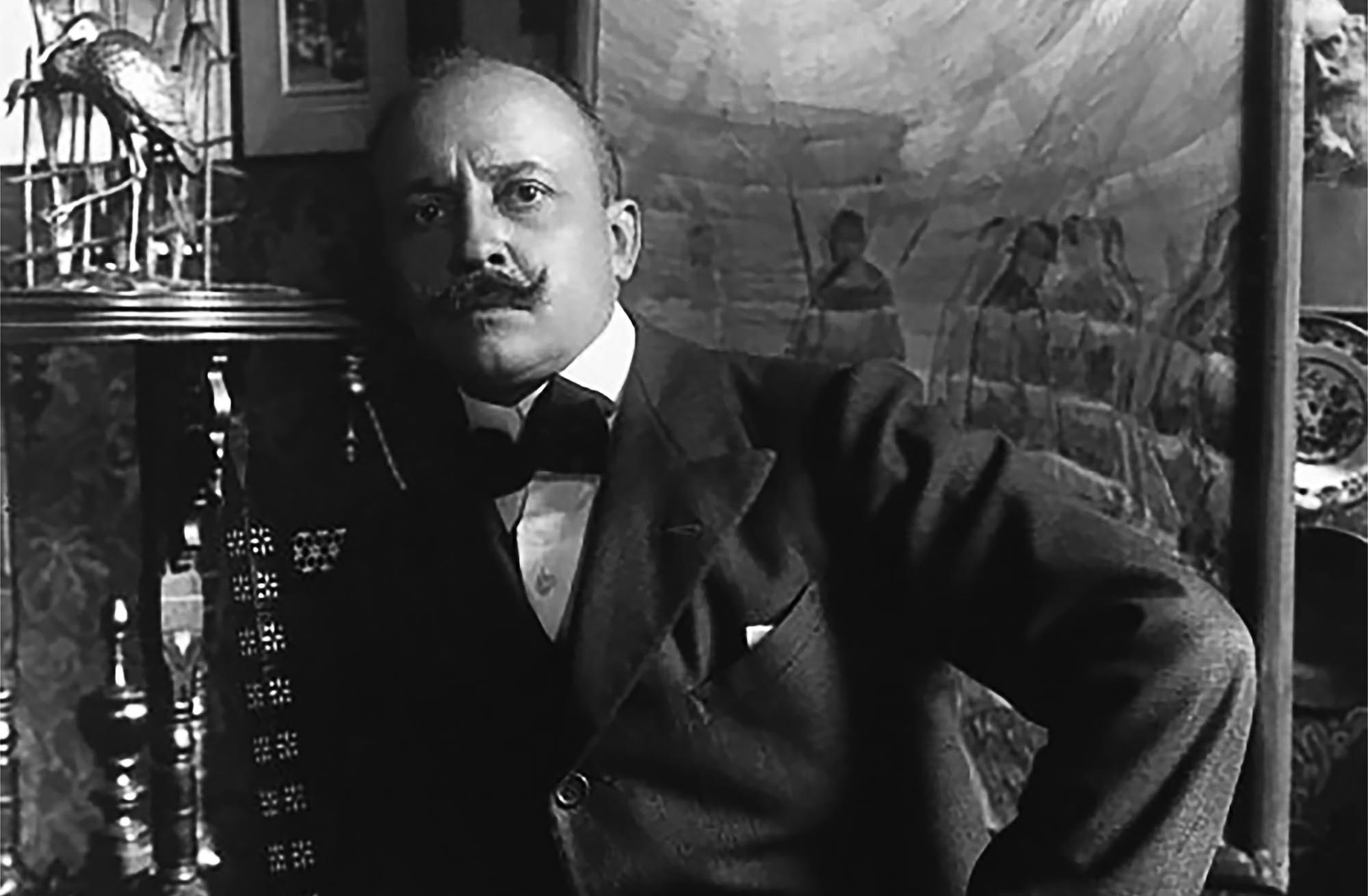Creators
Filippo Tommaso Marinetti: Futurist Manifesto
The Futurist Manifesto was not just a cultural provocation; it was a foundational text in modernist theory and practice.
At the dawn of the 20th century, artists and intellectuals were seeking new forms of expression that reflected the rapid technological and social changes reshaping Europe. Amid this transformation, Filippo Tommaso Marinetti (1876–1944), an Italian poet and provocateur, launched the Futurist movement with his Manifesto of Futurism, published in Le Figaro on February 20, 1909. Marinetti’s manifesto rejected classical aesthetics, celebrated industrialization and aggression, and sought to destroy museums and libraries—symbols of a past he considered stifling. By proclaiming the death of the past and embracing the chaotic vitality of the industrial age, Marinetti helped steer modernism toward its most radical possibilities.
Filippo Tommaso Marinetti was born on December 22, 1876, in Alexandria, Egypt, into a wealthy Italian expatriate family. His father, Enrico Marinetti, was a lawyer and businessman, while his mother, Amalia Grolli, was a devout Catholic with literary inclinations. Raised in a bilingual environment rich with both classical European and North African influences, Marinetti received a privileged education that included early exposure to French literature and Latin culture.
He studied in Paris at the Sorbonne and later at the University of Pavia and Genoa, obtaining degrees in law and literature. However, he quickly abandoned a legal career in favor of writing, initially publishing symbolist poetry and engaging with the French avant-garde. His cosmopolitan upbringing and formal literary training were crucial to his later success in orchestrating a transnational cultural movement.
Marinetti was known for his charisma, theatricality, and relentless energy. A tireless self-promoter, he staged readings, performances, and “happenings” across Europe to spread Futurism. His personality matched his ideology: bold, controversial, and at times combative. He had a lifelong fascination with danger and conflict, which he saw as essential forces for cultural rejuvenation.
He married Benedetta Cappa, a Futurist painter and intellectual, in 1923. Their partnership was both personal and artistic—she played a significant role in expanding Futurism’s reach into visual and architectural domains. Marinetti was also a father to three daughters and continued writing prolifically throughout his life.
“The Futurist Manifesto” (1909)
The Futurist Manifesto declared:
“We affirm that the world’s magnificence has been enriched by a new beauty: the beauty of speed.”
This bold opening set the tone for a series of eleven declarations. These included an admiration for war (“the world’s only hygiene”), a glorification of youth and violence, and a call to discard past traditions and academic culture. Marinetti’s manifesto did not outline a visual style so much as it called for a new attitude toward art and life, one rooted in energy, danger, and technological momentum.
This document did not lay out a visual style but a revolutionary ethos that inspired painters, writers, musicians, and architects to reject classical models and embrace innovation and rupture. The manifesto celebrates speed, technology, youth, violence, and industry, rejecting tradition, moralism, and the past. It famously praises war as “the world’s only hygiene” and calls for the destruction of museums and libraries to make way for a new cultural order rooted in energy and innovation.
The publication of the Futurist Manifesto in Le Figaro in 1909 marked a cultural detonation. The text glorified:
-
Speed: “We affirm that the world’s magnificence has been enriched by a new beauty: the beauty of speed.”
-
Violence and War: Marinetti referred to war as “the world’s only hygiene.”
-
Technology: He idolized the car, airplane, and industrial city as symbols of a new artistic spirit.
-
Destruction of the Past: The manifesto advocated burning museums and libraries to free art from tradition.
Futurist Revolution
The Futurist Manifesto was seminal in redefining the artist’s role in society. Unlike earlier avant-gardes, Futurists embraced modernity uncritically, positioning themselves not as interpreters but as engineers of cultural revolution. While many later distanced themselves from the movement’s militaristic and nationalistic aspects, its emphasis on rupture, innovation, and transformation permeated modernism.
Marinetti’s influence is seen in:
-
Dada and Surrealism’s rejection of logic and tradition
-
Bauhaus and De Stijl’s mechanized visual culture
-
Pop Art’s embrace of mass media and speed
Although Marinetti was a poet and playwright, his influence quickly extended to the visual arts. Painters like Giacomo Balla, Umberto Boccioni, and Carlo Carrà were inspired by the manifesto’s call for dynamism. These artists developed a visual vocabulary that emphasized motion, fragmentation, and mechanical energy—prefiguring movements like Cubism and Constructivism.
These Futurist ideas directly influenced architecture and design by promoting dynamism, movement, and the aesthetics of machines. His vision inspired architects like Antonio Sant’Elia, who imagined futuristic cities with streamlined, mechanized structures made of concrete, steel, and glass. Later, Sant’Elia would proclaim his own Futurist Architectural Manifesto (1914), which rejected historical styles in favor of verticality, asymmetry, and integration with modern technologies like electricity and elevators. These concepts anticipated elements of modernist and high-tech architecture, influencing movements like Constructivism and Brutalism.
Filippo Tommaso Marinetti’s 1909 Futurist Manifesto marked a radical rupture with tradition and a fervent embrace of modernity. By championing speed, machinery, violence, and the rejection of the past, Marinetti helped establish one of the most provocative and influential strands of early modernism. His ideas shaped not only visual arts through figures like Giacomo Balla and Umberto Boccioni, but also literature, architecture, and politics.


